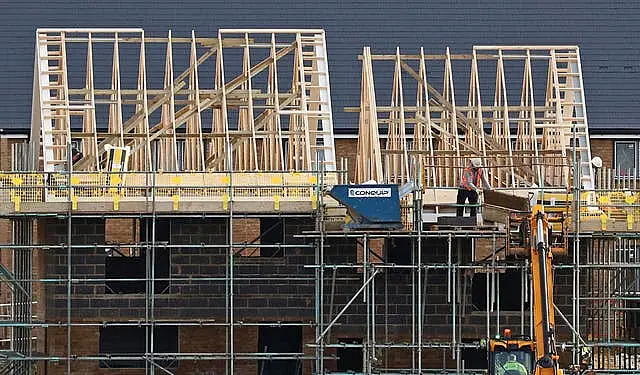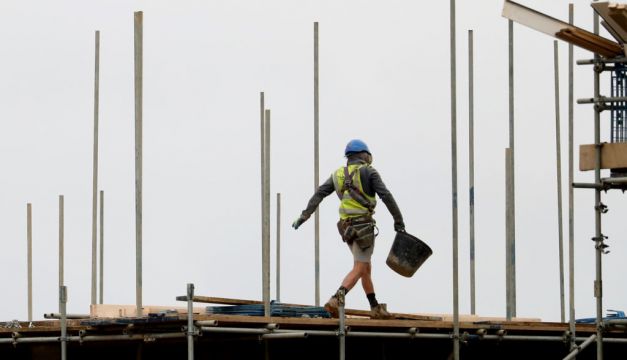The Government’s target to build 33,000 homes every year as set out in its Housing For All plan could see embodied emissions almost double, an academic has said.
Dr Oliver Kinnane said that embodied carbon, which is the amount of carbon emitted during the construction of a building, would continue to increase to 2030 as construction grew across the country.
Dr Kinnane, the lead academic at the Building In A Climate Emergency Research Group at University College Dublin School of Architecture Planning and Environmental Policy, appeared before the Climate Action Committee on Tuesday.
He said that embodied carbon accounted for about 14 per cent of the national emission figure.
The figures were produced by the research group, which is undertaking a comprehensive modelling study of the Irish built environment and construction sector, baselining current activity and projecting emissions out to 2030 and 2050.
Dr Kinnane warned there would be a high embodied carbon bill as a result of the Housing For All plan.
“The projection is that if we build 400,000 homes, there will be an embodied carbon cost of somewhere between four and six megatons of CO2 equivalent, based on the current carbon intensity of construction,” Dr Kinnane said.
“If we were to move to a less carbon intensive model and move from predominantly masonry in construction to say timber construction, we could reduce that bill quite considerably.
“But it is a lot of construction, and it is going to come up with a high embodied carbon bill.

“So at the moment, the embodied carbon is about 14 per cent of the national figure.
“We could see that increased to above 20 to 25 per cent I think.
“I’d have to go back to our models and have a look exactly at a figure that we can produce those.
“But it could be up to 25 per cent. Really, there is an awful lot of construction outlined in the National Development Plan, and we have tried to model that, and it could push us to multiples of our target values.”
Dr Kinnane said that concrete represented more than 90 per cent of Ireland’s building material-related national production emissions.
“Innovations in the cement industry can reduce this considerably. Savings of up to 50 per cent or more are possible,” he added.
“Such as concrete, we estimate, would cut 15 to 20 per cent off the annual embodied carbon cost of our own development.
“Biobased materials are a solution but uptake is low, skills and production facilities are lacking.”
Social Democrats TD Jennifer Whitmore said: “I think that is very worrying because this seems to be a real blind spot for us as a country. It doesn’t seem like we’ve actually really even thought about this as an issue.”
Meanwhile, Pat Barry, chief executive officer of the Irish Green Building Council (IGBC), raised concerns about whether the one-stop shop retrofitting firms were contractor-led.
A number of companies have registered as one-stop shops for the national energy efficiency programme.
Mr Barry said there should be an independent adviser for homeowners involved during the process of retrofitting homes.
“For us, it is absolutely critical before any works begin that somebody independent comes in, does an evaluation of the property. Ideally we’d like to see a building renovation passport developed for each home, because not everybody is able to do a full retrofit in one go,” Mr Barry told the committee.
“They may be able to afford to do a couple of measures but those measures themselves have all to link together.
“The building renovation passport is about setting out a long-term strategy for the home, and it’s really important that the measures that are applied to the home are suitable.
“So, for example, if you take a heritage property or a traditionally built home, there may be issues with damp, with structural defects – these all have to be evaluated before any renovation can begin. You may have to delay a renovation by six months or a year.
“You may need to use a particular type of insulation and if we just allow contractors to lead on it, we may end up with inappropriate solutions. It really emphasises the importance of independent evaluation.”







